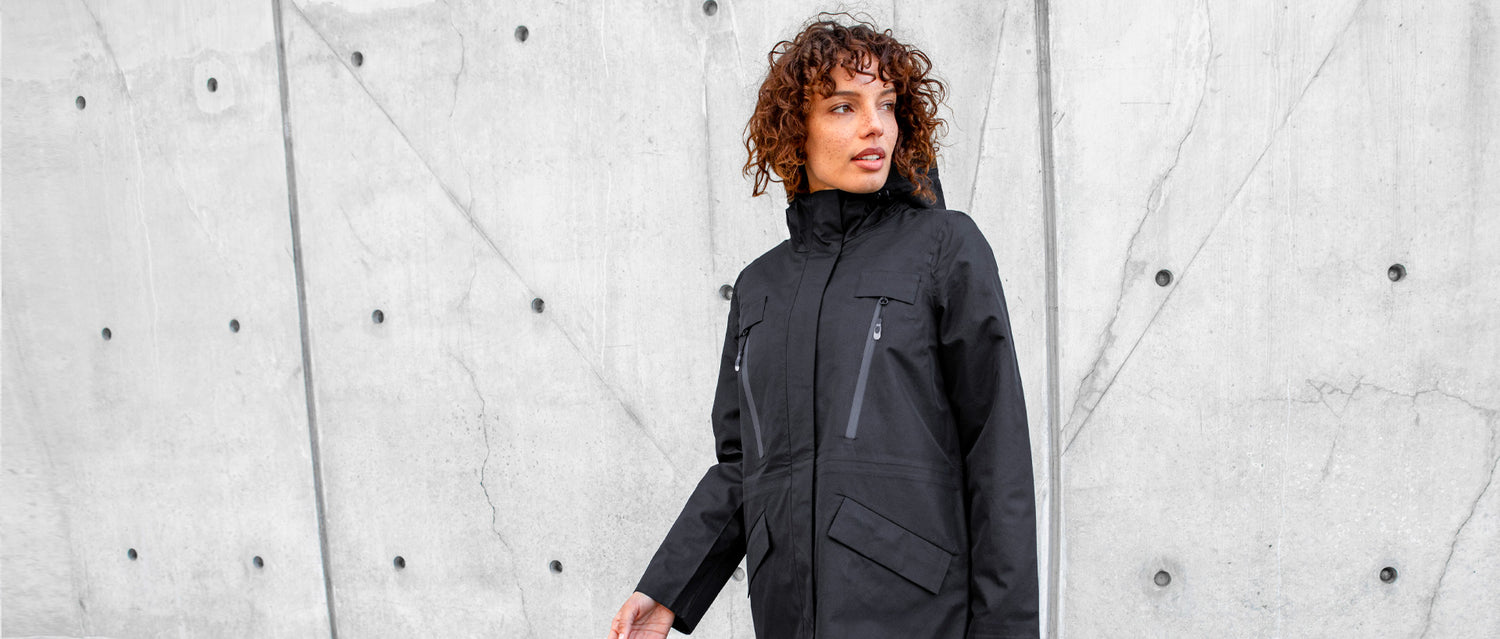-
Chelsea Women's Lightweight Rain Jacket
Regular price $91.00Regular priceUnit price per$260.00Sale price $91.00Sale
Women's Rain Jackets
While a reliable winter coat is a necessity, some days you’ll need something more waterproof. Even during misty mornings or snow flurries, a rain jacket can make a huge difference. Non-waterproof materials can quickly become saturated, even in light precipitation, leaving you feeling soggy and cold.
Triple F.A.T. Goose women’s rain jackets are specifically crafted to keep all moisture out with seam sealing, a 20,000mm HydraSeal fabrication, DWR coating, and water-repellent YKK Aquaseal and Aquaguard zippers. So, whether you’re taking a rainy day hike or commuting to work, our breathable raincoats will keep you completely dry and comfortable.
How Does Rainwear Work?
Our rainwear works because of its 3-layer waterproof construction, which features a high-performance technology and best quality layering. The first layer is fabricated with a laminated external DWR fabric. This fabric is bonded to a breathable and waterproof middle layer. The final layer is a polyurethane lined fabric that acts as a shield to sweat and oil, but maintains breathability. These durable laminate membranes and DWR coatings result in jackets that are both lightweight and breathable, but able to withstand extreme precipitation.
The waterproof membranes are not impenetrable, however. The membranes are laced with tiny micropores that prevent raindrops from passing through while providing an escape for water vapor arising from perspiration. Besides water-repellency, breathability is the second most-defining feature of a good rain jacket.
On the outer surface of rainwear, manufacturers spray on the final critical element that makes rainwear effective: DWR, or Durable Water Repellent. A DWR finish creates microscopic spikes on the face fabric that encourages the rainwater to collect as droplets that run off rather than spreading out and soaking in.
Difference Between Water-Repellent, Water-Resistant, and Waterproof
The phrase "water-repellent" only refers to the property of either water-resistant or waterproof fabrics to prevent water absorption. Both water-resistant and waterproof fabrics are hydrophobic, meaning water is repelled on contact (due to a DWR finish).
The difference between water-resistant and waterproof comes down to this: exactly how much water pressure can a piece of fabric withstand before it becomes saturated. These measurements are made according to something called a Hydrostatic Head test, allowing items to be graded using their HH rating.
Water-resistant clothing tends to fall within an HH rating of 1,500mm to 5,000mm. Waterproof jackets, by contrast, must have an HH grade of 10,000mm or higher. Waterproofness is the highest quality of water protection you can get, and the higher the rating, the more effective it is. Waterproof jackets often also come with several other features to improve their functionality which is why they can be more expensive than simpler water-resistant clothing.





